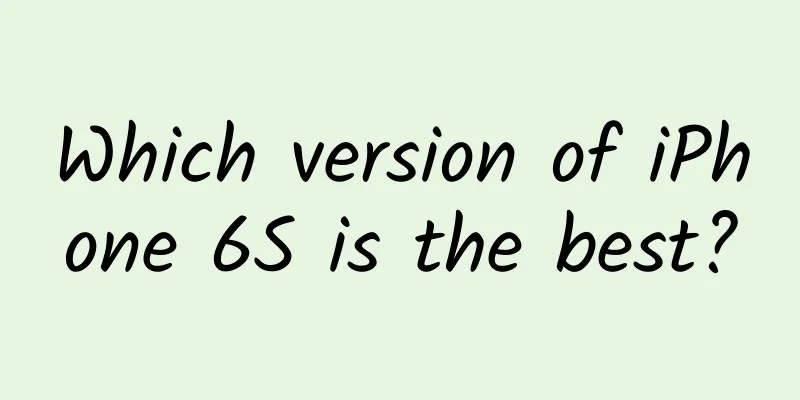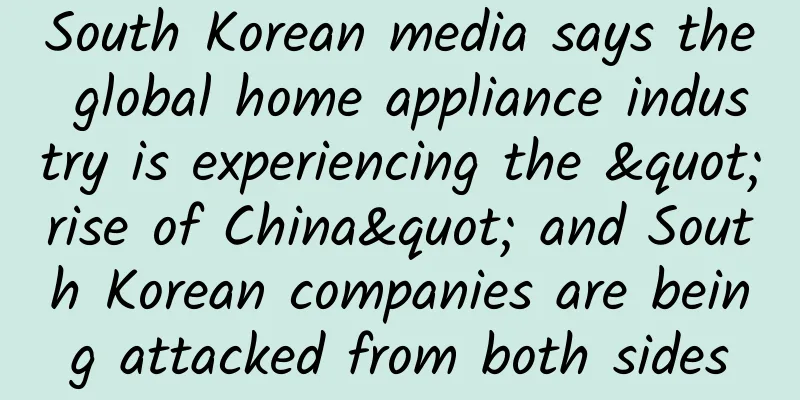Which version of iPhone 6S is the best?

|
iPhone 6s has been on the market for more than two months. With the new A9 processor, 3D Touch and rose gold color, it has created a sales record of 13 million units in the first week of its launch! However, Apple has admitted that different A9 chips will have a 2% to 3% performance gap , and also emphasized that there is not much difference in actual use. Although the chip controversy has attracted widespread attention, after a period of use, I believe that most 6s users have accepted such differences. What we are going to discuss today is the difference in network standards of iPhone 6s . iPhone is sold in various countries around the world, and each country has multiple network operators, and the network standards used by each network operator are also different. So how can consumers distinguish these different versions of iPhone and find the iPhone that suits them? This time, we analyze the iPhone 6s with different network standards, hoping to help everyone solve the mystery of the network standards of different versions of iPhone. To understand this problem, we must first look at the mainstream network standards: As shown in the figure, I believe that everyone is very familiar with these standards. Next, let's take a look at how Apple divides iPhone versions. Taking iPhone 5S as an example, we intercepted the information of the US Apple official website and the domestic Apple official website : Apple's official website in the United States Apple's official website in China From the iPhone 5S technical specifications introduction page on the Apple's official website in the United States, it can be seen that the theoretical hardware network support for overseas iPhone 5S is: -A1533 (GSM) supports China Unicom 2G/3G/4G, China Mobile 2G -A1533 (CDMA) supports China Unicom 2G/3G/4G, China Telecom 2G/3G, China Mobile 2G -A1453 supports China Unicom 2G/3G/4G, China Telecom 2G/3G, China Mobile 2G -A1457 supports China Unicom 2G/3G/4G, China Mobile 2G -A1530 supports China Unicom 2G/3G/4G, China Mobile 2G/4G Domestic iPhone 5S theoretical hardware network support: -A1533 supports China Telecom 2G/3G, China Unicom 2G/3G, China Mobile 2G (China Telecom customized) -A1528 supports China Unicom 2G/3G, China Mobile 2G (China Unicom customized) -A1518 supports China Mobile 2G/3G/4G, China Unicom 2G/3G (China Mobile Customized) -A1530 supports China Unicom 2G/3G/4G, China Mobile 2G/3G/4G (Open Version) Seeing this, I believe most consumers will have questions: Q: Why can't the locked version of iPhone abroad be activated (no service) when using a domestic SIM card? A: This is because many iPhones abroad are contract phones, and this iPhone can only use SIM cards of customized operators. Due to China's legal supervision, mobile phones sold in mainland China cannot be equipped with network locks, so many models (customized phones) have been derived in mainland China. Q: Why does the mobile phone hardware support many network standards, but only some network standards can be used in actual use? A: Take a certain model of iPhone sold in China as an example. When used in the country, the network coverage of the operator can meet the needs of users, and at the same time, it involves some interest issues. Other network standards of the mobile phone will be soft-blocked. Only when the user goes abroad or roams, the network coverage of a specific operator is not available, and other network standards will be enabled. Of course, these problems can be solved by some methods. For example, after A1528 is jailbroken, it can support China Mobile and China Unicom 4G networks after installing plug-ins. Q: How is network shielding achieved? A: This is divided into two situations. The first is software shielding. The iPhone will be verified online when activated. Different models and versions of iPhone have corresponding different activation strategies. Different activation strategies will block some network support. The second is hardware lack of support . For example, the US version of A1533 is divided into two versions, GSM and CDMA. These two versions of A1533 have differences in hardware. Through disassembly, we can also see that there are differences in the RF circuit part of the GSM version and the CDMA version of iPhone 5S . After talking about 5S, let's take a look at iPhone 6s : It can be seen that there is no big difference in network support for various versions of iPhone 6s, but many folk versions have been derived. Unicom version : supports Unicom 2G/3G/4G, Mobile 2G (AT&T, T-mobile version in the United States) Dual 4G version : supports Unicom 2G/3G/4G, Mobile 2G/3G/4G (Hong Kong, Korean version) Triple network version : supports Unicom 2G/3G/4G, Telecom 2G/3G/4G, Mobile 2G (Verizon version in the United States) Full network version : supports Unicom 2G/3G/4G, Telecom 2G/3G/4G, Mobile 2G/3G/4G (mainland version, Japanese unlocked version) Years of iPhone repair experience also confirm this. Through disassembly, we can see that in the RF circuit part of the iPhone 6 motherboard, the iPhone that does not support TD-LTE is missing a chip . In the circuit schematic diagram, it can be seen that the missing chip is responsible for the band38/39/40/41 RF amplifier switch, and the TD-LTE network cannot be turned on. This is the so-called hardware castration . The reason for hardware castration of network frequency bands is that different operators use different network standards, and the legal supervision of each country is also different. In order to meet different needs and save patent expenses, Apple has made different degrees of software blocking and hardware castration for different versions of iPhone. So here, we remind consumers that when buying an iPhone, they must pay attention to the network standard support of different versions of iPhone. The soft lock may be unlocked, but if it is hardware castration, then the network cannot be unlocked anyway. As a winner of Toutiao's Qingyun Plan and Baijiahao's Bai+ Plan, the 2019 Baidu Digital Author of the Year, the Baijiahao's Most Popular Author in the Technology Field, the 2019 Sogou Technology and Culture Author, and the 2021 Baijiahao Quarterly Influential Creator, he has won many awards, including the 2013 Sohu Best Industry Media Person, the 2015 China New Media Entrepreneurship Competition Beijing Third Place, the 2015 Guangmang Experience Award, the 2015 China New Media Entrepreneurship Competition Finals Third Place, and the 2018 Baidu Dynamic Annual Powerful Celebrity. |
>>: 4K small steel cannon deserves the name 43-inch Weijing TV unboxing experience
Recommend
How to write copy without any flaws? Here are 4 practical tips
How do top writers treat their writing? Hemingway...
2022 Beijing Paralympic Winter Games schedule: What events are included? How many days will it be held?
The Winter Olympics have ended for some time, and...
Why is the Yellow River named Huang? A brief discussion on the origin of the name "Yellow River"
The Yellow River, which has been surging for thou...
Summary of 100 Brand Keywords in 2022
Predictions for 100 Internet keywords in 2022! su...
Event Operation: How to plan an online event?
1. What is the purpose of online activities? The ...
The Fascinating History of Mermaids
Leviathan Press: Do you still believe in the exis...
Huangdaozhu's public account traffic matrix monetization sideline project 2.0, novices with zero fans can also earn 3,000-5,000 per month
Huangdaozhu's public account traffic matrix m...
Let's talk about the three new font width styles in iOS 16
Preface In iOS 16, Apple introduced three new wid...
Beware! A woman was admitted to the ICU after petting a cat? What are the things you should pay attention to when raising pets?
Today, the editor was shocked by a piece of news ...
How to promote Kuaishou? Share the promotion method of Kuaishou live broadcast!
How to promote Kuaishou live streaming ? In 4 yea...
Feeling overheated physically? Remember to cool down your mind, too.
It's been so hot lately that air conditioners...
Be good! The AppStore charts have been blown up again!
The latest news is that the Apple AppStore rankin...
Small but strong convection, how difficult is it to accurately report it?
Produced by: Science Popularization China Author:...
Stop thinking of the Wrangler as an off-road vehicle and try out the new Ford Ranger pickup truck
Nowadays, hardcore off-road SUVs have already sha...
How to buy the gold and silver commemorative coins for the 600th anniversary of the completion of the Forbidden City? Purchase channels are as follows
How to buy the gold and silver commemorative coin...









